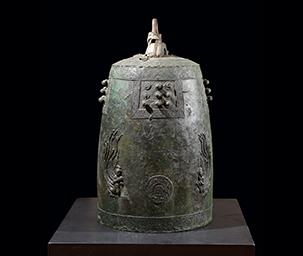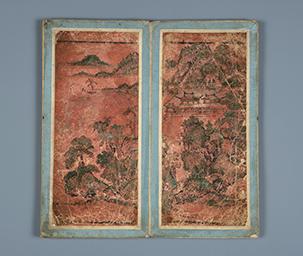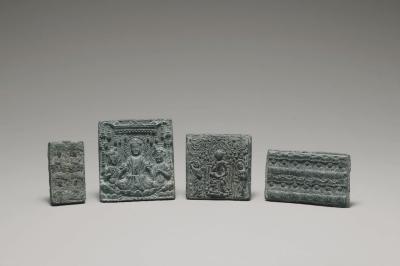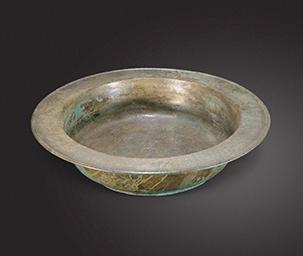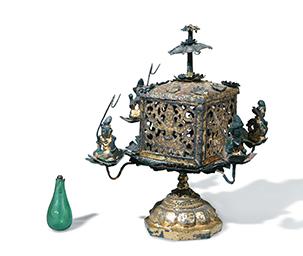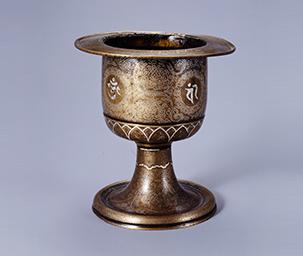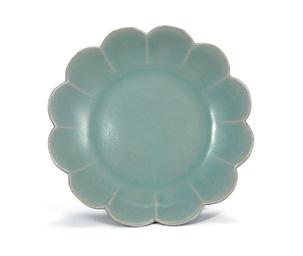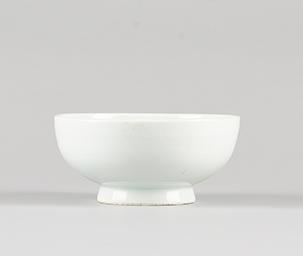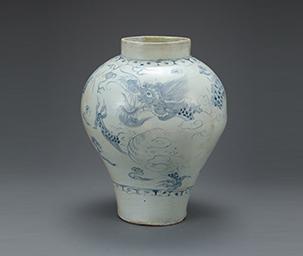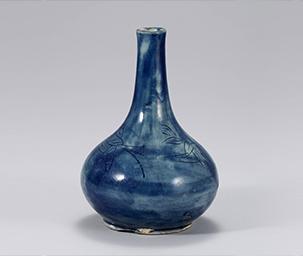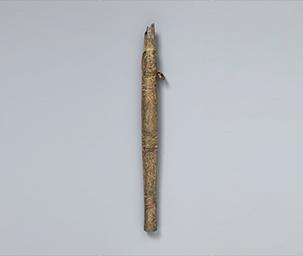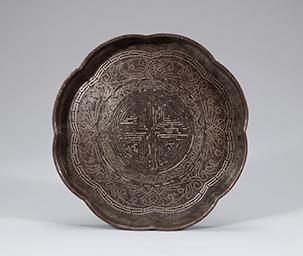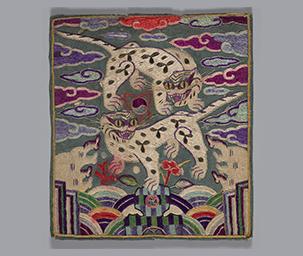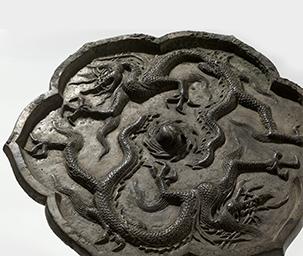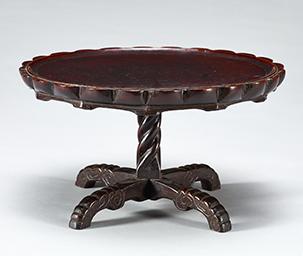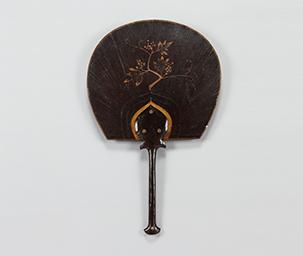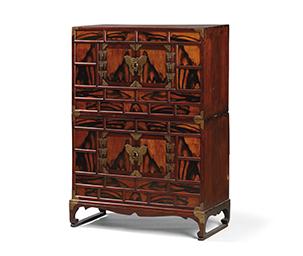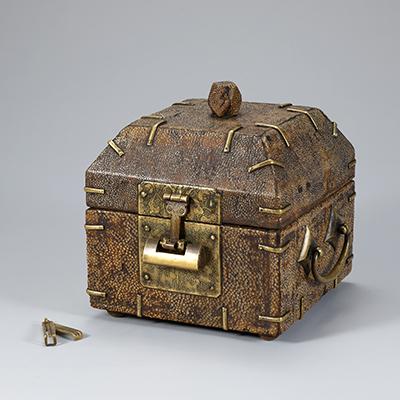Premanent Exhibitions
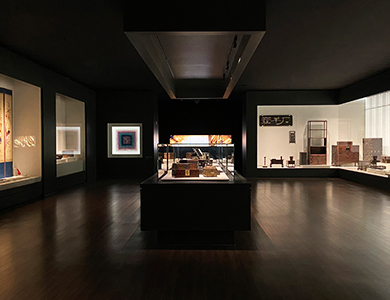
- Charity for the Buddha
- Paintings, sculptures, architecture, and crafts created to promote Buddhism and to praise various Buddhist gods, including Shakyamuni, are collectively referred to as Buddhist art.
- A vessel that embraced the sky and the sea
- Pottery is an art that bears fruit when earth, fire, and the person who makes it are united.
- The scent of wood and paper
- Woodwork and hanji (Korean traditional paper) crafts, which make furniture, stationery, and items necessary for food, clothing, and shelter, using common wood or strong and tough hanji, were the most familiar crafts with the people.
Charity for Buddha
Exhibition room
Buddhism is a religion that began with the teachings of Siddartha Gautama, or Sakyamuni, who was born and enlightened as a prince in India around the 6th century BC. Paintings, sculptures, architecture, and crafts created to promote Buddhism and to praise various Buddhist gods, including Shakyamuni, are collectively referred to as Buddhist art. Since Buddhism was originated in India, Buddhist art also has its roots in India. However, new Buddhist artworks were created according to each country, region, and period where Buddhism was introduced. Korea was no exception. Buddhist artworks immediately became objects of worship or tools for worship, so people who lived in those times expressed the spirit of the times in Buddhist artworks with sincere devotion.
Bronze Buddha statue excavated in Daemok-ri, Gimje
On March 7, 1980, a resident living in Tansang Village, Daemok-ri, Seongdeok-Myeon, Gimje-si, found four small copper plates with Buddha statues in them while installing a plastic house in his field near his house (San 29, Daemok-ri). This news quickly became a hot topic. This is because the Buddhist statues of Baekje, which were found only in Buyeo and Iksan, which were the capitals of Baekje, were found in places not recorded in history.The sizes and sculptures of the four spots found are different. The largest copper plate (7.3×7.8cm) among them was engraved with two female Buddhists carrying a Buddha and a flower under the ornate tent. On the second largest one (6.8×6.8cm), Buddha’s disciple, which took a natural posture on the left and right, surrounding Thinking Buddhist, were sculpted. In the third largest one (8.8×5.0cm), a total of 14 Buddha's disciples in the tabernacle were carved, 7 top and bottom, and the smallest one (3.5×6.1cm) engraved a Buddha teaching disciples in the tabernacle. These statues can be presumed to be made in Baekje around the year 650, as these statues show similar features to Buddha statues in the middle of the 7th century during the Three Kingdoms period, such as Maaesamjonbul in Seosan and Mireuk Samzonbul in Samhwaryeong, Namsan in Gyeongju.
How was this little Buddha on the board used as an object of ritual or worship? On one side, it was believed that the wall was decorated by attaching it to a large plate, and on the other, the four legs on the largest Buddha on the board and the rim of the Buddha on the board were pitted based on the thin plate. It was also looked like the frame used to make the extruded Buddha. However, an opinion was raised that it was not the frame of extruded Buddha since gold (Au) components were found as a result of the component analysis on the surface. However, it cannot be concluded that it is not a frame of extruded Buddha because a Dressing Buddha was found in a temple and plating can be done for later generations as well.
Until the time this Buddha on the board was discovered, Baekje's Buddha statues were found only in Yesan, Seosan, and Taean as important cities such as Buyeo, Gongju, and Iksan as well as important transportation routes from Baekje to China. It is possible to guess that Daemok-ri, Seongdeok-myeon, Gimje-si, where this Buddha on the board was excavated, was an important place in Baekje. Two years after the discovery of the Buddha on the board, 2 Baekje stone Buddhas were also found in Bohwa-ri, Soseong-myeon, Jeongeup-si, which is remarkably close to Gobu, which is believed to be the central city of Baekje. The Buddha on the board was excavated from Daemok-ri, Gimje and the stone Buddha statue in Bohwa-ri, Jeongeup means not only the transportation route for Baekje but also an important southern transportation route.
The bell (national treasure) excavated from Naksujeong
In July 1999, a woman named Takahara Himiko visited the Fukuoka Board of Education, Japan, and said she would like to donate one Korean bell. However, the committee advised her that it would be desirable to donate the bell to the cultural institution of original country, and after hard work, the woman promised to donate it to the National Institute of Cultural Properties in Korea in October of the same year. On November 5 of the same year, the Bronze Bell was returned to Korea, this means that after leaving hometown, the bell stepped on her nostalgic homeland after 73 years. This bronze bell was designated as Treasure No. 1325 on September 21, 2001 and was later transferred to the Jeonju National Museum.The reason why this bronze bell became a collection of the Jeonju National Museum can be found in a letter sent by Makoto Saito, the 3rd governor of Joseon during the Japanese colonial period, donating the bronze bell to Suseongwon in Japan in 1926. According to Saito's letter, the bronze bell was found in the ground when a person with the surname of Park, who lived in Jeonju-myeon at the time, repaired his own Naksujeong, and was exhibited at the Gongjin Conference held in Seoul in 1916. In other words, the original location of the bronze bell was Jeonju.
On the other hand, it is said that a tile with a history of opening was found in 1909 where the bronze bell was found. From this point of view, this bronze bell is the one that was hung in a temple called Gaewonsa in Jeonju, and it is believed that it was buried in the ground when the part of the bell was broken. Since then, Gaewonsa is thought to have been destroyed and a pavilion called Naksujeong in the Joseon Dynasty was built.
The bronze bell of Naksujeong is reminiscent of the bronze bell of Unified Silla, but it is presumed to have been built in the middle of the 10th century to the first half of the 11th century, as it is similar to the detailed expression of the bronze bell in the early Goryeo period. However, there is a bell that resembles this bronze bell in Woncheongsa in Japan. These two bells are not only similar in size, but also the shape of vines and flying to the sky, so it is presumed that the same craftsman used the same pattern plate. In Buddhism, the sound of the bronze bell means 'ilseungjiwon sound', that is, 'the sound of Buddha'. Also, it is said that the sound tube, which is like a bamboo tube in the part where the bell is hung, is a symbol of the Manpasik Pipe of Silla's treasure that grants all wishes. The sound of this bronze bell, which gave peace to the people of Jeonju a thousand years ago, and gave their wishes still resonates in the exhibition room of the National Jeonju Museum.
Pure gold Buddha excavated in Wonsu-ri (Top 10 relics)
This pure gold Buddha was discovered on August 6, 1963, by a farmer who lived in Wonsu-ri, Yeosan-myeon, Iksan-si while plowing a field. The place where this pure gold Buddha was found was a place known among villagers as the site of Dokjeokgol. However, there was a time when this pure gold Buddha, which visitors love most, was going to be sold to the jewelry shop and almost became a gold ring. The person who discovered this Buddha went to a jewelry shop in Nonsan, Chungcheongnam-do, but he was disappointed because the shop would pay him only the price corresponding to 22.5g of gold and he turned around. At that time, a police officer found it and then, this Buddha has been delivered to us till today.The figure of Buddha, an enlightened entity, is described in detail in the Buddhism scriptures, one of which is that the body glows golden. To faithfully follow the contents of the scriptures, they will need to make them gold. However, among the numerous Buddhas since the Three Kingdoms period, there are only three Buddha made of pure gold: two Buddhas excavated from the 3-story stone pagoda in Guhwang-dong, Gyeongju and one pure gold Buddha excavated in Wonsu-ri, Iksan. As it is now, it can be said that gold has been a very precious and expensive gem since ancient times. For this reason, most Buddhas are made of metal such as iron or copper, wood, soil, and stone, and are only gold plated to give them a golden hue.
It can be seen that the Buddha statue is a Sakyamuni Buddha as it bears the Hangmachokjiin, which is said to have been acquired when Sakyamuni gained enlightenment. In particular, the shape of an inverted triangle face, a hem slightly over the right shoulder, and a pedestal are similar to the Lama Buddhist statues of Nepal and Tibet, which were popular in ancient times of China.
On the back of the statue, there is a prestigious inscription, ‘男 善 人 辛丑正月日 金○○’, which indicates that it was originated by a person with the surname of Kim in January of the new year. Considering that the influence of Nepalese and Tibetan Buddhas was remarkable on this Buddha, it is highly likely that the new year will be 1361. On the other hand, there is a ring on the top, which is thought to have been worn around the body like a necklace.
Representative artifact
Turn the page!
A vessel that embraces the sky and the sea
Exhibition room
Pottery is an art that bears fruit when the earth, fire, and the person who makes it are united. It was hard to make ceramics without such high technology and artistry. More than 1,000 years ago, the only countries that could make ceramics were China and Goryeo. In Goryeo, pottery production began in the late 9th to early 10th centuries with the influence of celadon-making technology introduced from the kiln in Wolju, Zhejiang, China based on the rigid earthenware of Unified Silla. However, in only 200 years, celadon was produced in Buan and Gangjin, where they reached a remarkable level of excellence such that Chinese were surprised. In the Joseon Dynasty, Buncheongware and white porcelain replaced the celadon, which reached the peak in the Goryeo Dynasty.
Celadon excavated in Yucheon-ri
Looking at the Goryeo celadon, Goryeo’s famous writer, Gyubo Lee (1168~1241) said in his poem, "The skill of making a blue porcelain wine glass has borrowed the harmony of the sky”, and the Chinese writer, Seogeung said about Goryeo celadon, “The color is called Celadon Green by the Goryeo people, and in recent years, the production of pottery has become more sophisticated, and the luster is more beautiful."The main production area of this Goryeo celadon is Jeonbuk. Gochang Yonggye-ri and Banam-ri, Buan Jinseo-ri, and Yucheon-ri adjacent to Julpo Bay, along with Yongun-ri, Gyeul-ri, and Sadang-ri in Gangjin Bay, Jeollanam-do, were the places where high-quality Goryeo celadon was made. At the kiln site of celadon in Buan, a variety of patterns such as intaglio, embossing, openwork, inlay, iron painting, Taehwa technique, underglaze iron, etc. were used. The main types are bowls, plates, cups and saucers, bottles, Prunus Vase, chairs, incense burners and kettle. In Jinseo-ri, in addition to high-quality celadon, containers used in daily life with slightly poor quality were mainly produced, while high-quality and refined celadon were produced at the kiln site of Yoocheon-ri, Buan. The high-quality Yucheon-ri celadons were also delivered to the royal family. This can be verified with the facts that the celadon excavated at Jireung of the King Myeongjong of Goryeo (reign 1170~1202) and the Yucheon-ri celadon were similar, but the unique black and white Toehwamun celadon plate of Yucheon-ri was excavated in the Seokreung of King Heejong (reigned 1204-1211) and the remains of Hyeumwon (founded in 1122) in Paju, which is believed to be a temporary palace of the king of Goryeo.
In particular, at the kiln site in Yucheon-ri, Buan, a large-sized Prunus Vase, reaching 70 to 90 cm, was excavated. Two of the Prunus Vases on display at the Jeonju National Museum are inferior to than that, but they are countless large Prunus Vases. Prunus Vase is a bottle with narrow and short legs, wide shoulders, and thin bottom. The surface is beautifully decorated with peonies and dragon patterns using inlay techniques. In particular, Prunus Vase, decorated with peony patterns, was found in Jeonju Elementary School during the Japanese colonial period, and has a deeper meaning.
Representative artifact
Turn the page!
The scent of wood and paper
Exhibition room
Woodwork and hanji crafts, which make furniture, stationery, and items necessary for food, clothing, and shelter, using common wood or strong and tough hanji (Korean traditional paper), were the most familiar crafts with the people. Korean woodwork crafts are simple yet have a high level of dignity. Although Korean papercrafts were made in earnest after the late Joseon Dynasty, there are many things full of personality, perhaps because they were easy to make and were free to change. Wood and paper were easy to obtain and make, but the woodwork and hanji crafts gained a lot of love as they became more natural as they touched.
Wood Painting Crafts
Four seasons of the Korean peninsula are distinct, so the grain of the wood is excellent, and the vegetation of plants is abundant, and a variety of high-quality wooden crafts were produced from large furniture from cabinets to comb boxes. Wooden furniture gives a concise and understated feeling, while Najeon lacquerware and Hwagak crafts show another aspect with an emphasis on decoration.Hanji crafts
Hanji handicrafts made by cutting or twisting the hanji to make small things necessary for daily life were light and easy to make and received a lot of attention. Unlike woodwork, Korean papercrafts were actively produced after the late Joseon Dynasty, when the supply of hanji became active.Trees, papers, and fans that generate the wind
Fans were a necessity for the hot summer season, as it was said, “A favorable impression in summer is a fan, and a favorable impression in winter is a calendar.” Except for some of the feathers of some birds, most of the fans were made of wood with paper on top of them, and various patterns were cut out or painted.Representative artifact
Turn the page!
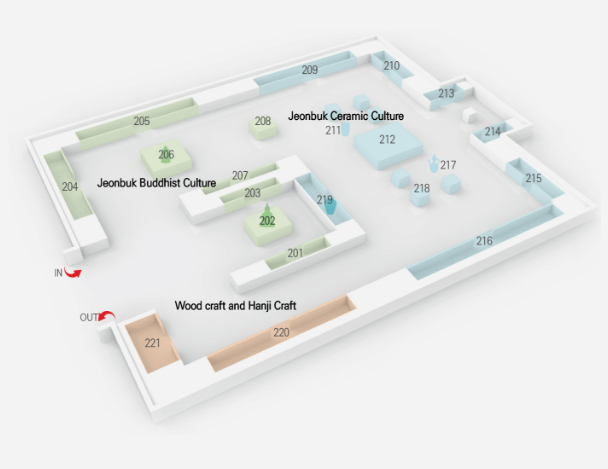
Jeonbuk Buddhist Culture
- 202Buddhist Sculpture
- 204Sarira Bottle and Inner Casket Terracotta Head of Deva
- 205Incense Burner
- 206Buddhist Bell from Naksujeong Pavilion
- 207Buddhist Gong
- 208Basin with Dragon Design
Jeonbuk Ceramic Culture
- 209Celadon Shards
- 210Celadon Flower-shaped Dish
- 211Celadon Chair with Openwork Decoration
- 212Celadon Melon-shaped Ewer Celadon Cup and Stand
- 213Celadon Shards
- 214Goryeo White Porcelain Shards
- 215Celadon Cup and Stand
- 216Celadon Dish with Chrysanthemum Design
- 217Celadon Ewer with Grape Design
- 218Celadon Maebyeong with Dragon Design
- 219Buncheong Jar With Fish Design
Woodcraft and Hanji Craft
- 220Reading Desk
- 221Fan with Taegeuk Design
QUICK MENU 원하시는 서비스를 클릭하세요!
등록된 퀵메뉴가 없습니다.

